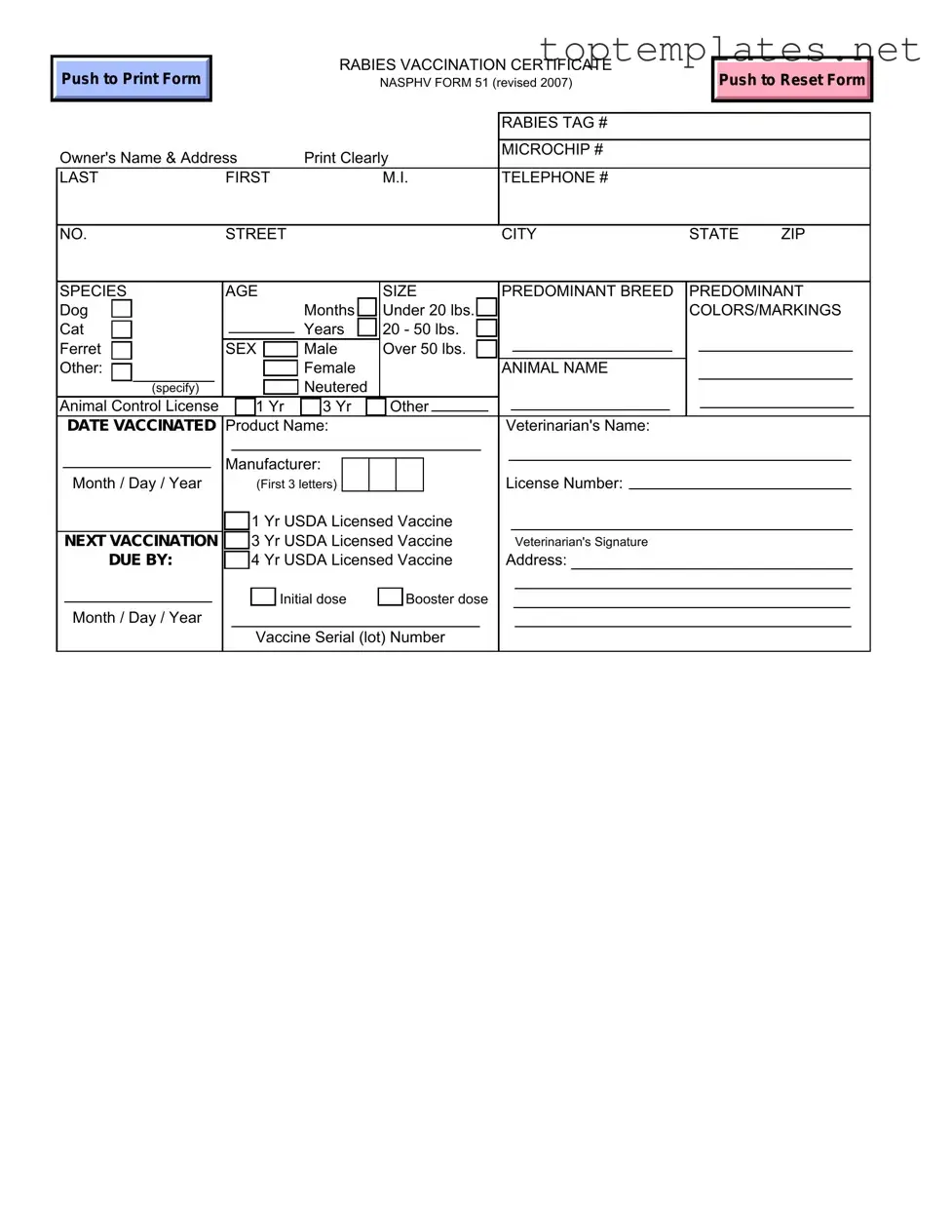What is a Rabies Vaccination Certificate and why is it important?
A Rabies Vaccination Certificate is a document that verifies your pet has received a rabies vaccine. Issued by a veterinarian, it includes the pet's name, species, the vaccine's manufacturer, the date given, and when the next dose is due. This form is critical for pet registration, travel, boarding, and in some cases, emergency care, ensuring public and pet safety against rabies.
How often do I need to renew my pet's Rabies Vaccination Certificate?
Renewal frequency depends on the vaccine used. There are 1-year, 3-year, and some places offer 4-year vaccines. The "Next Vaccination Due By" date indicated on the certificate will inform you when you need to get a booster for your pet. Always consult with your veterinarian to maintain your pet's vaccinations on schedule according to local laws and the type of vaccine administered.
Is a Rabies Vaccination Certificate required for all pets?
While requirements can vary by location, generally, dogs, cats, and ferrets are required to be vaccinated against rabies and have a current Rabies Vaccination Certificate. Exotic or unusual pets may have different requirements. Check with local animal control or health departments for specific regulations in your area.
What information is needed to fill out a Rabies Vaccination Certificate?
To complete a Rabies Vaccination Certificate, you'll need the pet's name, species, age, and size; owner's contact information; the rabies tag number; microchip number (if applicable); vaccine product name, manufacturer, lot number, and the date it was given; the veterinarian's name, license number, and signature; and the date the next vaccine is due. It's crucial for this information to be accurate for the certificate to be valid.

